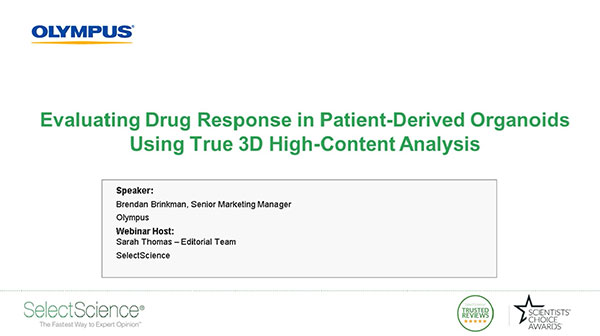Evaluating Drug Response in Patient-Derived Organoids Using True 3D High-Content Analysis
Patient-derived organoids are a useful tool for drug discovery because they mimic human physiology since they are derived from patient cells and have a 3D structure. In this webinar, learn how to apply patient-derived organoids for drug discovery research using imaging and how true 3D analysis contributes to the study.
In this webinar, you will learn:
- A drug study based on patient-derived organoids that benefitted from using true 3D high-content analysis (HCA).
- How truly three-dimensional analysis can improve quantitative results over sub-sampling data sets.
- How the NoviSight™ HCA software interface links all your confocal 3D data from a microplate experiment in a powerful, visual, analytical interface — including 3D rendering, object segment gallery, heat map, and data mining scatterplot.
Presenter:
Brendan Brinkman
Senior Marketing Manager
Olympus
Evaluating Drug Response in Patient-Derived Organoids Using True 3D High-Content Analysis
|
对不起,此内容在您的国家不适用。
